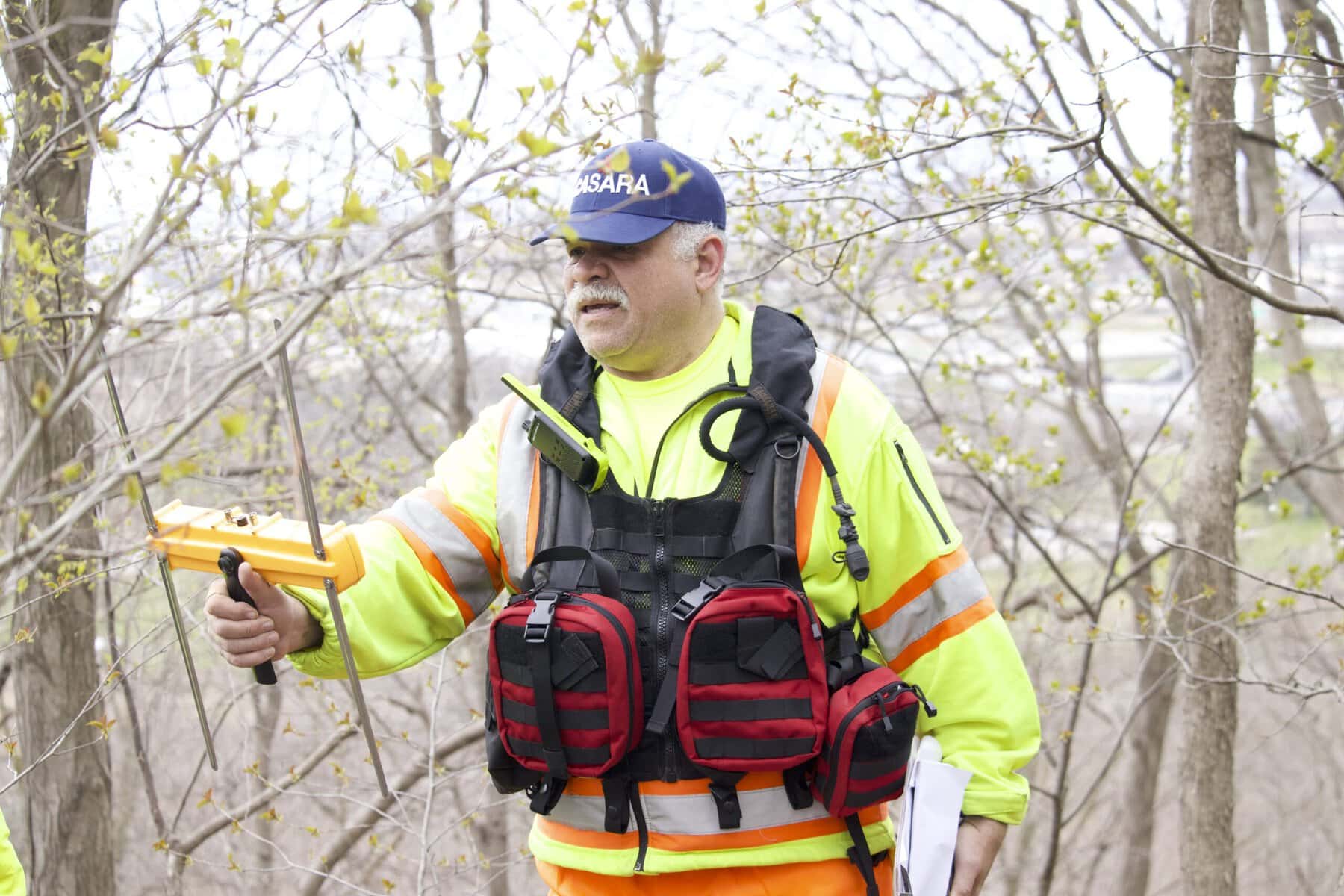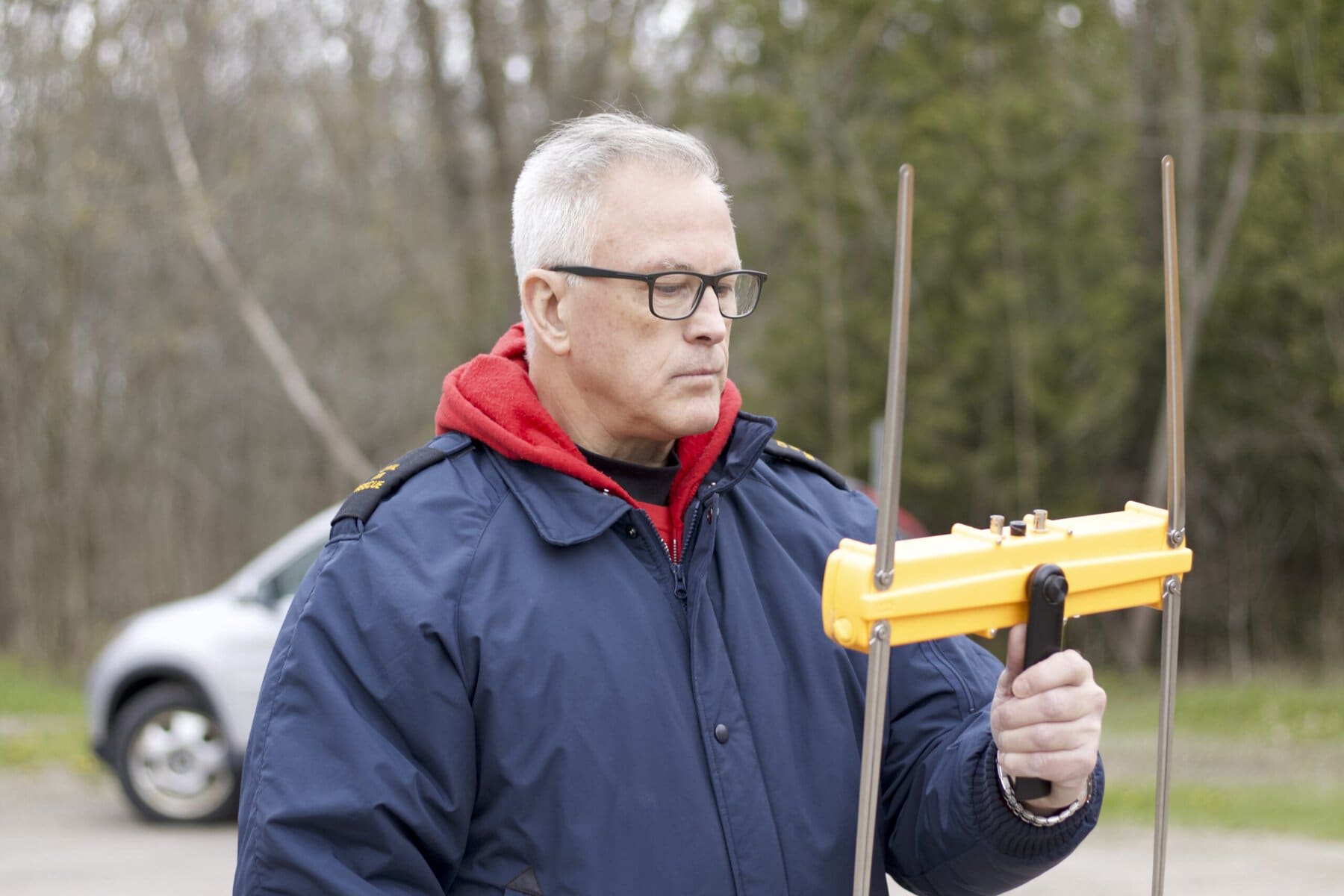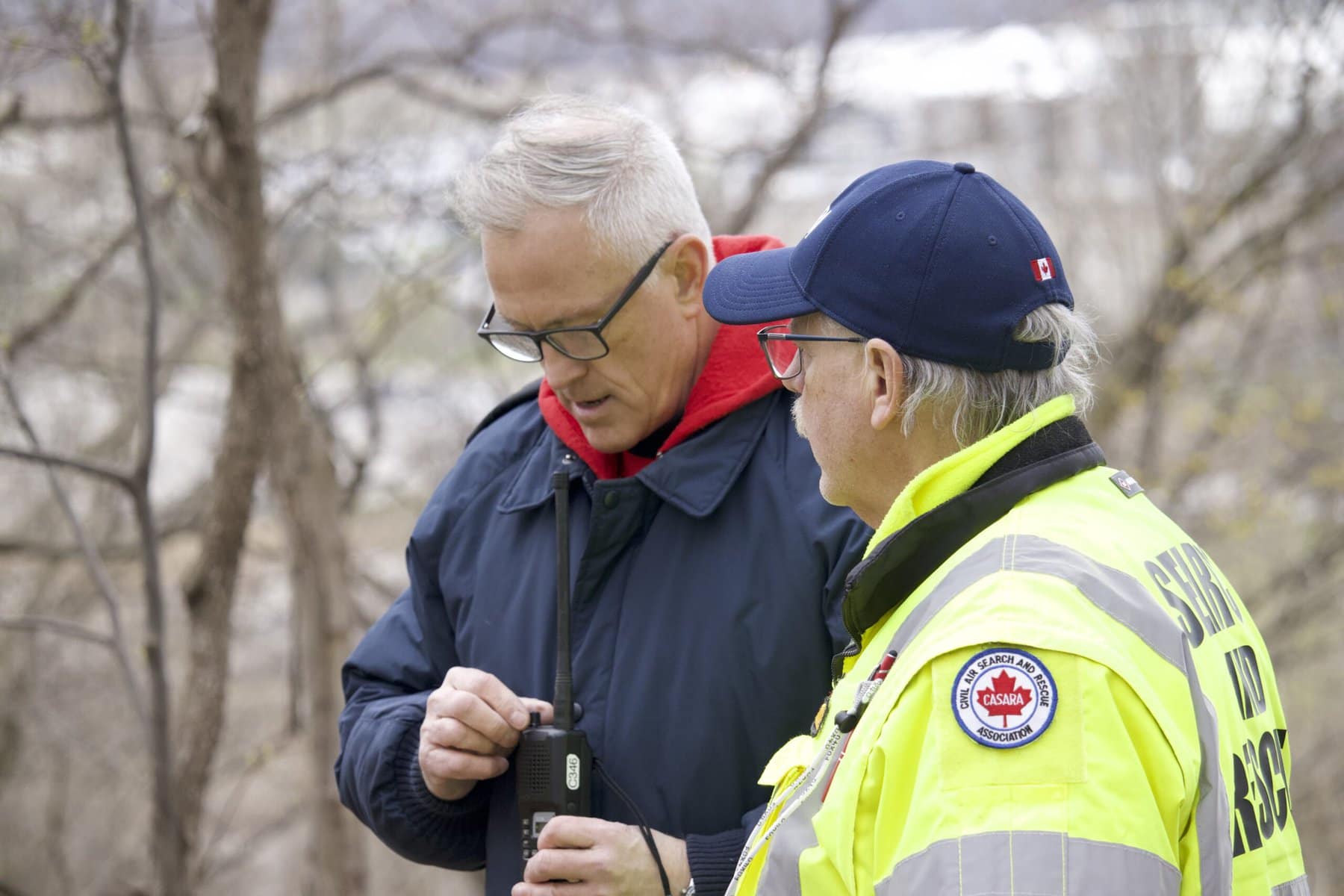On a routine training exercise, a team of search and rescue volunteers spent Saturday morning trudging through Woodend Conservation Area in Niagara-on-the-Lake looking for one of their own.
Randy Klaassen, a search co-ordinator with the Niagara chapter of the Civil Air Search and Rescue Association (known as CASARA), played the role of a lost and exhausted hiker while the rest of his team searched for him.
The volunteer group assists the Canadian military and coast guard by providing aerial support in searches for lost people across Ontario.
The civil search and rescue team is often deployed to look for downed airplanes and lost hikers.
Klaassen, who’s been with the Niagara chapter for 16 years, said the work often takes volunteers to extremely remote locations.
The Niagara chapter, headquartered at the Niagara District Airport, has about 35 active volunteers and seven attended Saturday morning’s training session.
A few NOTLers were in the mix, including Cathy Buis, Fran Doran and Klaassen himself.
But some, like Gideon Luty, came from as far away as Milton to participate in the training exercise.
“When I look at what I do as a correctional officer, I don’t feel like I’m contributing to making the world a better place”, said Luty, who works in a juvenile detention centre in Toronto.
He said volunteering with the search and rescue unit makes him feel like he’s giving back to the community.
Luty also volunteers with the Oakville chapter of the auxillary coast guard.
Though the team planned to train in the sky, aboard a Cessna 182 aircraft, Klaassen said the wind was too severe, so the team resorted to a ground exercise instead.
The crew at CASARA receives requests for aerial support through the Joint Rescue Co-ordination Centre in Trenton, which alerts the group whenever it receives a distress signal through an emergency radio channel.
Klaassen noted planes have emergency beacons that go off if they crash. Some hikers also bring emergency beacons when trekking through remote areas.
These get picked up by the rescue centre in Trenton, which then musters a search effort, often relying on civil volunteers and military professionals to lead the effort.
Once the team in Niagara gets the call, they assemble a few volunteers and head to the search area, using their own radios and homing devices to close in on the signal.
On Saturday, it was about 10 a.m. when the crew debriefed at the airport clubhouse.
The volunteers then rounded up some essential gear, including warm clothes, high-visibility vests and snacks in case the search ran long.
They boarded a mobile command vehicle, affectionately known as the Pig, and took off in the direction of Woodend, where the emergency signal was coming from.
Though the team was using radios to pick up the signal, safety officer Glenn Osmond said it’s common for emergency beacons to be damaged or destroyed in crashes. This can make search and rescue efforts much more challenging.
Luty said it’s common for crash sites to go undiscovered, despite best efforts.
In his two years with CASARA, Luty said he’s never been involved in a real aerial search.
“I’m not looking to have any experience on someone else’s misfortune,” he said. “I would rather have false alarms all day long.”
Osmond, on the other hand, was involved in a search for two people who went down in a plane near Fort Hope in northwestern Ontario in March 2023.
Though Osmond was the first to spot the crash site, he said it was a team effort.
Klaassen, also involved in the highly publicized search, said it’s exhausting and taxing work.
An aerial search team consists of a navigator, a pilot and two spotters who alternately scan a search area 20 minutes at a time, sometimes for eight-hour stretches.
Klaassen said the search took five days.
The passengers were dead when the plane was finally located near Chaucer Lake, north east of Thunder Bay, on March 4 of last year.
Despite the emotional heft, Klaassen said he feels an “adrenalin rush” when the team receives a request for assistance from the rescue centre.
Though many on the team profess a love of aviation, they have diverse professional backgrounds.
While Luty works in corrections, Buis is a retired nurse and team co-ordinator Shane Barton parks cars in Niagara Falls.
For Buis, the reason to get involved was “exceptional.”
“The possibility to hopefully find somebody is always great,” she said.
The team arrived in Woodend at around 10:30 and spent about one hour looking for Klaassen before finding him.
The team split off into two groups of three and four, with Barton, a 40-year team veteran, leading the search.
The rocks, valleys and even wrought iron fences in the park area near Niagara College interfered with the signals of their homing devices, prolonging the search.
Klaassen told The Lake Report the terrain would challenge the volunteers but estimated they’d be done by 11 a.m.
The team finally reconvened, safe and sound, at the airport around noon, splitting a few pizzas after the chilly training exercise.
- People interested in learning more about NOTL’s volunteer search and rescue unit are welcome to attend its next open house, this Saturday, April 27, in the CASARA building at Niagara District Airport. It runs from 9 to 4 p.m.













